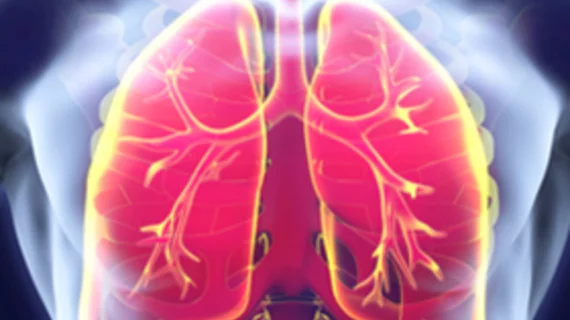Enhanced dual-energy CT (DE-CT) can help distinguish lung squamous cell carcinoma from adenocarcinoma, reported authors of a new study published in Academic Radiology.
Lead author Zhaotao Zhang, and colleagues found iodine quantification parameters taken from a specific phase of DE-CT scanning were “significantly” different in patients with one type of lung cancer versus another. This method can be particularly helpful in patients whose tumor tissue or cells may be difficult to gather with invasive biopsy.
“Typically, the pathological type of lung cancer can be identified by core biopsy, fiberoptic bronchoscopy, or cytological examinations,” Zhang, with The Second Affiliated Hospital of Nanchang University in China, and colleagues wrote. “However, a small portion of lung cancers are difficult to diagnose by pathology, and the pathological type of these neoplasms cannot be determined.
Our research has indicated that a single enhanced DE-CT scan during the VP with iodine quantification may be useful for distinguishing lung squamous cell carcinoma from adenocarcinoma.”
Adenocarcinoma and squamous cell carcinoma are the primary subtypes of nonsmall lung cancers. As mentioned, diagnosing tumors through invasive biopsy is not always an option; other imaging methods, including CT perfusion, PET and traditional CT also have shortcomings tied to excessive radiation and high costs.
The researchers enrolled 62 patients with lung cancer (32 squamous cell carcinomas; 30 adenocarcinomas) to undergo enhanced dual-phase DE-CT scans, including an arterial phase and venous phase (VP).
During the two scanning phases the mean iodine concentration (IC), normalized iodine concentration (NIC) and slope of the curve (K) in adenocarcinomas were higher than those in squamous cell carcinomas. This was only true for the VP, not the arterial phase, the authors noted.
Additionally, IC combined with NIC and K achieved the highest diagnostic marks; the trio of parameters also had the lowest sensitivity. For comparison, IC alone and IC combined with NIC had similarly low diagnostic efficiencies, but higher sensitivity and specificity.
“These iodine quantification parameters measured during the VP may be useful for distinguishing lung cell squamous carcinoma from adenocarcinoma,” the researchers concluded. “In addition, DE-CT may be an important additional method for determining the pathological type of lung cancers, especially for patients from whom tumor tissue or cells are difficult to obtain.”

